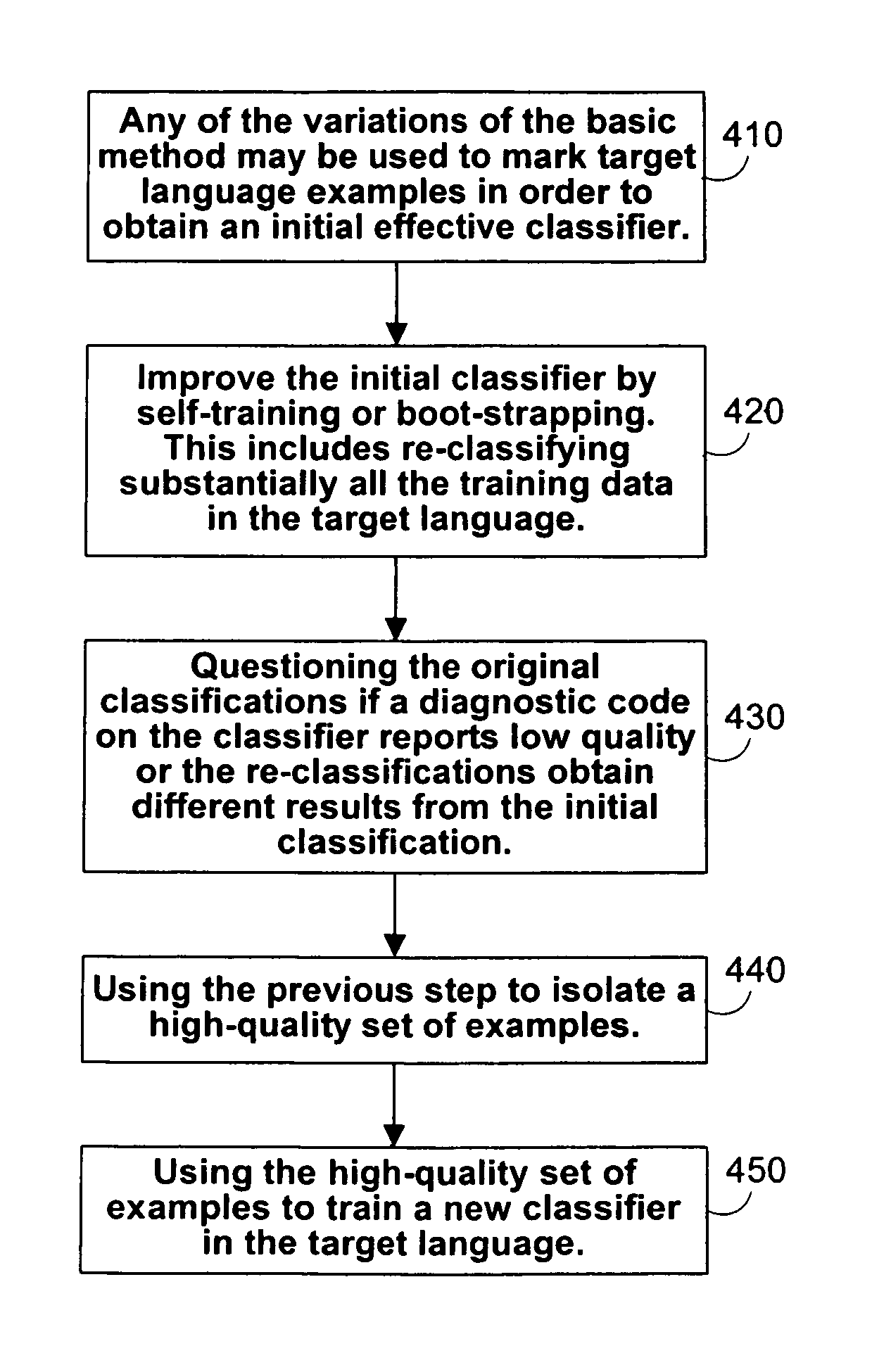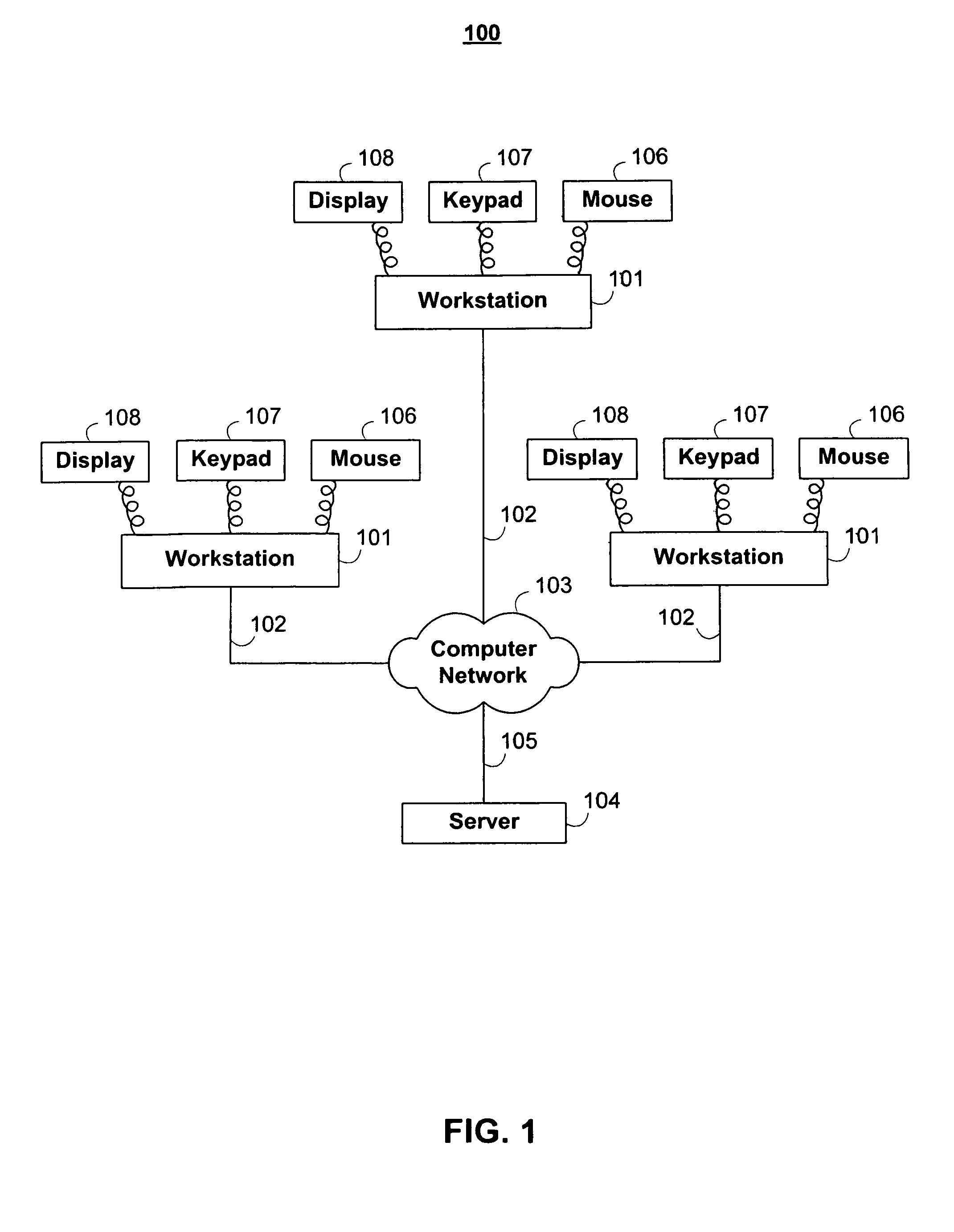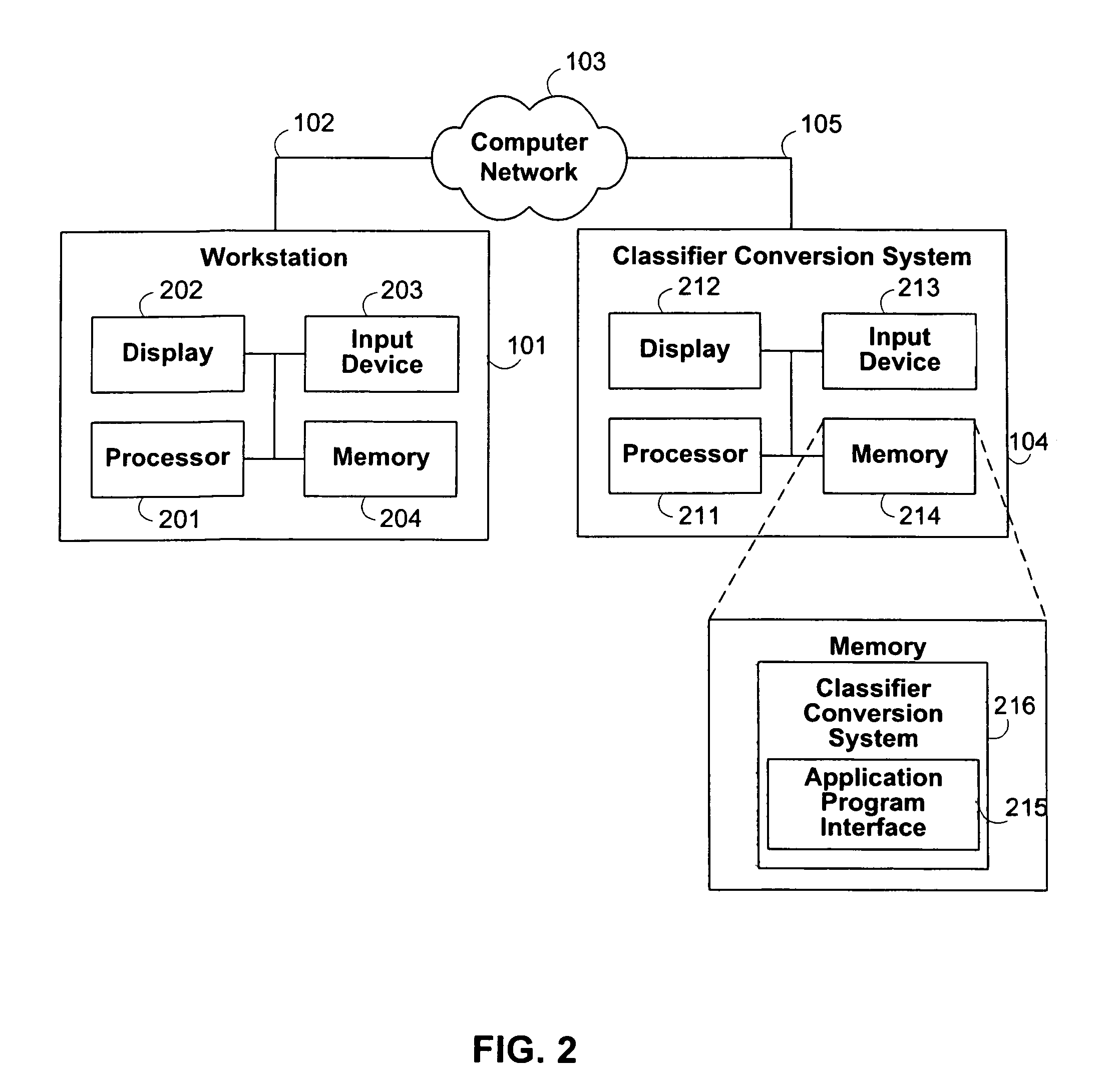Systems and methods for using automated translation and other statistical methods to convert a classifier in one language to another language
a technology of automatic translation and statistical methods, applied in the field of classification text, can solve the problems of high cost of system and/or method construction and maintenance, the most expensive step in machine learning, and the rule deigning,
- Summary
- Abstract
- Description
- Claims
- Application Information
AI Technical Summary
Benefits of technology
Problems solved by technology
Method used
Image
Examples
Embodiment Construction
Glossary:
[0016]Classify: The act of deciding which of a number of possible categories an example belongs to. A common application of classification is the assignment of an example to a category from an ontology or tree of categories. The classification is also called a “mark.”
[0017]Classifier: A computer program or machine-readable medium that includes a set of decision-making procedures for classifying a passage of text or other computer-readable item. An example is deciding if a passage of text is referring to a television, computer or washing-machine. A classifier is often implemented as a running program that can actually perform the decision procedure on data.
[0018]Features: The data used by the classifier to make a decision. Typically features are constructed from text by operations such as creating a list of words and ordered pairs of words in the text (called unigrams and bigrams). Often words are normalized by a process called “stemming” where words like “dog” and “dogs” ar...
PUM
 Login to View More
Login to View More Abstract
Description
Claims
Application Information
 Login to View More
Login to View More - R&D
- Intellectual Property
- Life Sciences
- Materials
- Tech Scout
- Unparalleled Data Quality
- Higher Quality Content
- 60% Fewer Hallucinations
Browse by: Latest US Patents, China's latest patents, Technical Efficacy Thesaurus, Application Domain, Technology Topic, Popular Technical Reports.
© 2025 PatSnap. All rights reserved.Legal|Privacy policy|Modern Slavery Act Transparency Statement|Sitemap|About US| Contact US: help@patsnap.com



